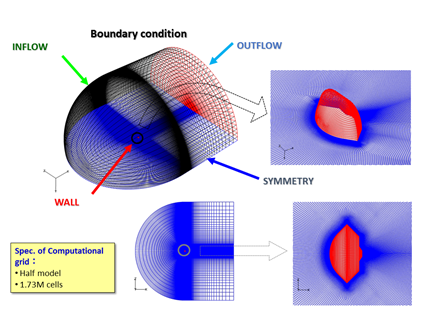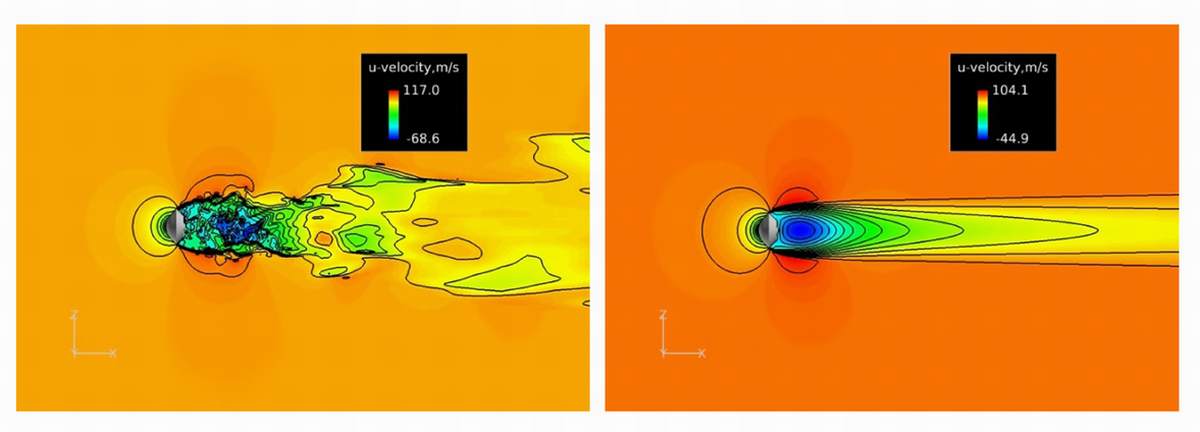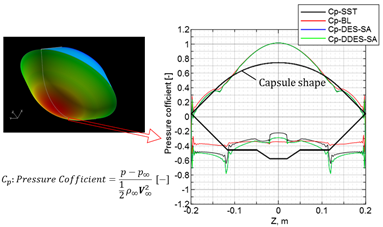Research and Development of Sample Return Capsule for future planetary exploration
JAXA Supercomputer System Annual Report April 2016-March 2017
Report Number: R16E0118
- Responsible Representative: Hironori Maejima(Research and Development Directorate, Research Unit I)
- Contact Information: Kazuhiko Yamada(yamada.kazuhiko@jaxa.jp)
- Members: Kazuhiko Yamada, Yusuke Higo
- Subject Category: Space(Moon Planet,Spacecraft,Space engineering,Space science)
Abstract
Hayabusa’ is the first sample return mission from an asteroid in deep space and proved its value worldwide. The sample return mission will become one of important missions in future planetary exploration. A sample return capsule is indispensable technology to realize it. The objectives of this activity are to take over its heritage and to improve its technology in order to realize the flexible and attractive future sample return mission.
Goal
The sample return mission from deep space is key of future solar system exploration. The technical maturity of the sample return capsule (SRC) is incredible to realize it. The objective of this activity is to understand the fluid dynamics around SRC during the atmospheric entry and descent phase in order to contribute the improvement of SRC technology.
Objective
There are some fluid dynamics issues related to development of a sample return capsule. The goal of this activity is to acquire the knowledge to reflect in the design of the next generation SRC by computational fluid dynamics. These issues are listed as following. 1)Wake analysis for the parachute deployment, 2)Behavior of jettisoned parachute cover, 3)Aerodynamic instability in transonic region, 4) Accurate prediction of aerodynamic heating environment during reentry phase.
References and Links
N/A
Use of the Supercomputer
Computational fluid dynamics related the sample return capsule was carried out using super computer. These results will be reflected in the design of future sample return capsules.
Necessity of the Supercomputer
It is generally difficult to reproduce the fluid dynamic condition in free flight of sample return capsule in ground tests. The numerical simulation is useful to understand the fluid dynamics phenomenon. However, the numerical simulation related to fluid dynamics requires the large computational resource. So, the super computer is indispensable. Its complex fluid dynamics around the sample return capsule can be understood, combining the results of both ground tests and numerical analyses using a super computer.
Achievements of the Year
In this year, the wake analysis of the sample return capsule for the parachute deployment was carried out as a first step. The validation and comparison of the simulation method was carried out for the ‘Hayabusa’ reentry capsule as a reference case, especially, focusing on the effect of turbulence model. The result indicates that the Baldwin-Lomax model outputs more reasonable results to capture the unsteady wake region than SST model and other models.
Publications
N/A
Computational Information
- Parallelization Methods: Process Parallelization
- Process Parallelization Methods: MPI
- Thread Parallelization Methods: n/a
- Number of Processes: 64
- Number of Threads per Process: 1
- Number of Nodes Used: 2
- Elapsed Time per Case (Hours): 20
- Number of Cases: 4
Resources Used
Total Amount of Virtual Cost(Yen): 30,536
Breakdown List by Resources
| System Name | Amount of Core Time(core x hours) | Virtual Cost(Yen) |
|---|---|---|
| SORA-MA | 12,992.23 | 21,368 |
| SORA-PP | 0.00 | 0 |
| SORA-LM | 0.00 | 0 |
| SORA-TPP | 0.00 | 0 |
| File System Name | Storage assigned(GiB) | Virtual Cost(Yen) |
|---|---|---|
| /home | 9.54 | 42 |
| /data | 95.37 | 424 |
| /ltmp | 1,953.13 | 8,700 |
| Archiving System Name | Storage used(TiB) | Virtual Cost(Yen) |
|---|---|---|
| J-SPACE | 0.00 | 0 |
Note: Virtual Cost=amount of cost, using the unit price list of JAXA Facility Utilization program(2016)
JAXA Supercomputer System Annual Report April 2016-March 2017





